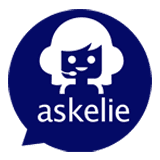Microsoft’s CEO predicted the death of the SaaS application models. Here’s why he’s right and what it means for every SaaS company.
It was almost a year ago, during December 2024. Satya Nadella stated the traditional application model will “collapse in the agent era” and it’s is not hyperbole. It is a directional forecast rooted in observable product shifts across the industry and real technical convergence happening inside cloud ecosystems. Treating it as a distant scenario is risky. The evidence suggests that meaningful traction will begin within the next two years, not ten.
This is not the story of apps becoming smarter. It is the story of apps becoming optional.
Below is a grounded analysis of why the shift is underway, why it matters, and what it means for SaaS builders who must protect current revenue while preparing for an AI native future.
1. Nadella’s Vision: When AI Agents Become the New Interface
In Nadella’s framing, AI agents sit above existing applications and databases, take input in natural language, infer intent, and then execute tasks across multiple systems. Instead of users switching between Salesforce, Netsuite, Zendesk, and spreadsheets, the agent becomes the working surface. The systems below become interchangeable utilities.
The prediction that “business applications collapse in the agent era” aligns with three observable trends.
Trend 1. AI is already doing multi system CRUD.
Agent frameworks can retrieve data, transform it, and commit updates across heterogeneous applications. These workflows previously required integration specialists or RPA bots. Large language models now perform selection, extraction, and decision sequencing with far less overhead, and reliability is improving.
Trend 2. The interface is shifting from forms to intent.
Enterprise copilots are evolving from assistants operating inside apps to assistants orchestrating across apps. This shift matches the early pattern Nadella described: business logic moving out of UIs and into an AI tier.
Trend 3. Vendors are concentrating effort on the AI layer, not the application layer.
Microsoft, Google, Salesforce, and others are directing R&D toward models, orchestration, and agent tooling. UI feature development is slowing relative to investment in AI infrastructure. That allocation choice signals where value is moving.
These are weak signals individually but strong signals in combination.
2. Business Logic in SaaS Application Models Is Migrating to the AI Tier
Today’s SaaS applications are largely forms-on-top-of-databases. Business logic sits in validation rules, workflow engines, and custom configurations. Nadella’s argument is that this logic becomes more valuable, manageable, and reusable inside an AI orchestration layer.
Three structural drivers are pushing logic upward.
Driver 1. Generalizable workflow reasoning.
Much of enterprise workflow logic is isomorphic. Whether you are approving an invoice or creating an onboarding checklist, the sequence is parse intent, check rules, gather context, and act. AI models perform this pattern natively.
Driver 2. Cross system dependencies.
Human behavior inside enterprises is forced to conform to app boundaries. AI agents are not. When logic lives above the apps, sequence planning and constraints can span systems without brittle integrations.
Driver 3. Decreasing switching costs for back end systems.
Once the AI tier becomes the action layer and users no longer touch a system directly, the underlying system of record becomes easier to replace. This accelerates commoditization of back ends.
The result is an inversion of the current stack. Instead of apps coordinating data and actions, AI coordinates apps. That has profound revenue implications for SaaS vendors whose stickiness is predicated on UI engagement and workflow lock in.
3. From Systems of Record to Systems of Action
Venture analysts have been signaling this shift for more than a year. Systems of record store data. Systems of action act on it. AI native systems eliminate the boundary between the two.
A system of action has three defining characteristics:
- It can take a goal and determine the necessary workflow.
- It can execute steps across multiple systems.
- It improves its approach over time based on observed patterns.
Consider what happens when customer support, finance, or operations teams interact primarily with an agent. The CRM becomes a data provider, not an interface. The ERP becomes a ledger. The ticketing system becomes a log. The center of gravity moves upward.
This transition does not require full autonomy. Partial autonomy is enough to change adoption patterns. Even if humans remain in the loop for approvals, the agent handles the bulk of the operational load. That reduces the value of differentiated UIs and increases the value of clean APIs, predictable schemas, and fine grained permissions.
4. Timeline: Why Two Years Is Realistic
The two year estimate is grounded in product maturity curves, not speculation. Four forces justify the timeline.
Force 1. Enterprise copilots are already deployed.
Microsoft 365 Copilot, Salesforce Einstein, HubSpot’s AI agents, and a broad set of vertical AI tools are in market. Once AI becomes the primary interface within a single suite, cross suite orchestration follows naturally.
Force 2. Rapid reliability gains.
Model reliability issues are real, but the pace of improvement is faster than most buyers expect. Techniques for grounding, tool use, policy enforcement, and domain tuning reduce hallucinations and improve determinism.
Force 3. IT integration readiness.
Many enterprises have spent the last decade modernizing architectures, adopting REST APIs, consolidating data, and cleaning identity layers. These foundations make cross system agent execution feasible.
Force 4. Economic pressure.
Companies are under pressure to reduce labor cost in repetitive workflows. Even partially reliable agents create immediate ROI in sales ops, finance ops, CS operations, and support. Economic pull accelerates adoption faster than technical push.
The net effect is that meaningful dual mode usage (human first plus agent first) will become common inside forward looking enterprise teams within two to three years.
5. Implications for SaaS Companies
Ignoring Nadella’s forecast is risky because the shift undermines the assumptions that built the SaaS business model. Three areas deserve analysis.
A. Distribution and engagement moats erode.
If users stop logging into your application, your engagement metrics collapse and your expansion levers become weaker. The agent chooses the workflow path, not the user. Vendors must prepare for a world where consumption happens programmatically, not interactively.
B. Feature differentiation loses power.
Many UI layer features become irrelevant when agents bypass the UI entirely. Differentiation must shift to data quality, interoperability, endpoint reliability, latency, and controllability.
C. Pricing models must adapt.
Seat based pricing becomes mismatched to agent based consumption. Companies should experiment with usage based, outcome based, or workflow based pricing to remain aligned with how value is created.
This is a structural shift, not a cyclical one. The companies that adapt first will control the framing of the next decade.
6. A Critical View: What Might Slow the Shift
Several counterpoints deserve consideration.
Reliability ceilings.
Even with improvements, agents will fail. High stakes workflows will require human oversight until failure modes are well understood. This slows full replacement but still allows partial automation.
Security and compliance constraints.
Agents connecting across systems introduce new attack surfaces. Enterprises will demand guardrails, auditability, and bounded autonomy. Vendors who cannot provide these will face friction.
Organizational inertia.
Many teams are optimized for app based workflows. Moving to agent first workflows requires training, process updates, and new governance. Not all organizations will transform at the same pace.
These friction points matter. They influence sequencing but not direction.
7. Preparing for a Dual Future
The right strategy is not a binary bet. SaaS companies must operate in two realities simultaneously: the world where users still need the product as it exists today, and the world where AI dissolves traditional app boundaries.
This is where AskELIE fits.
While others debate whether the shift will happen, AskELIE helps SaaS providers and their users prepare for both scenarios: protecting today’s revenue while building tomorrow’s AI native future. The work spans four areas:
- Strengthening the core product’s defensibility.
- Exposing well structured APIs for agent consumption.
- Designing AI native extensions with clear ROI.
- Building operating models that assume dual mode workflows.
Most teams underestimate the operational complexity of this transition. The winners will be those who prepare early, adapt pricing and integration surfaces, and build optionality into their product strategy.
Closing Thought
The Nadella prophecy is not about the death of software. It is about the relocation of value. Interfaces are temporary. Intent is durable. In an agent first world, the companies that thrive will be the ones that accept that business logic is moving up the stack and act accordingly.
The next two years will determine which SaaS companies maintain relevance and which become invisible plumbing beneath the AI layer.


